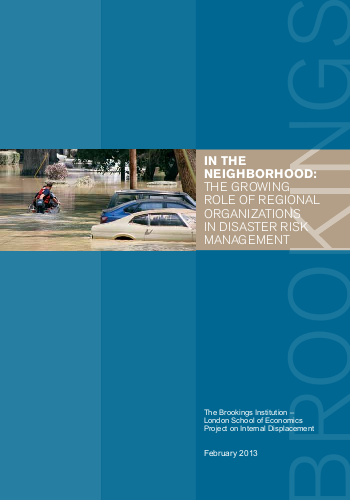
This study looks at the role of one group of important, but little-studied actors in disaster risk management (DRM): regional organizations. The term disaster risk management (DRM) is used to refer to all activities intended to reduce risk or prepare for disasters as well as those associated with emergency relief and reconstruction.
Global demographic trends suggest that more people are living in areas vulnerable to sudden-onset natural disasters even as scientists predict that the frequency and intensity of these disasters are likely to increase as a result of the effects of climate change. These trends, coupled with recent high-profile mega-disasters, are raising global awareness of the need to build the capacity of national governments, civil society organizations and international actors to prevent, respond to and recover from natural disasters.
Although regional mechanisms are playing increasingly important roles in disasters, there has been remarkably little research on their role in disaster risk management. While they are mentioned in passing in many summaries of actors in disaster response and while there are some descriptive studies of specific regional bodies, there are few published studies about the relative strengths and weaknesses of regional bodies, much less comparisons of their range of activities or effectiveness in DRM.
This study seeks to begin to address that gap by providing some basic information about the work of more than 30 regional organizations involved in disaster risk management and by drawing some comparisons and generalizations about the work of thirteen of these organizations through the use of 17 indicators of effectiveness. This introductory section begins by placing the issue of regional organizations and DRM in the context of broader research on regionalism and identifies some of the characteristics (and complexities) of assessing regional engagement with disasters. It then turns to the definitions, methodology, and shortcomings of this study.
